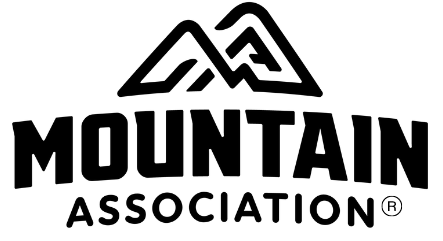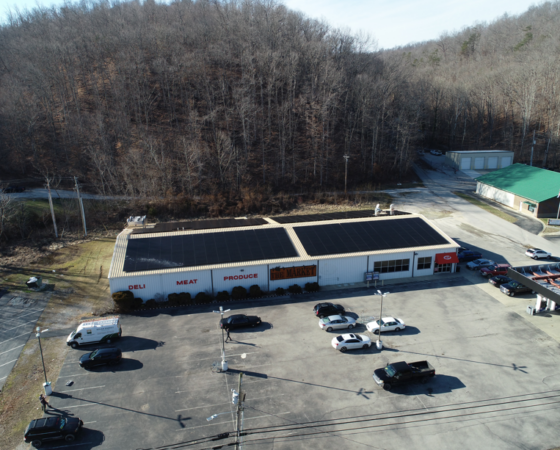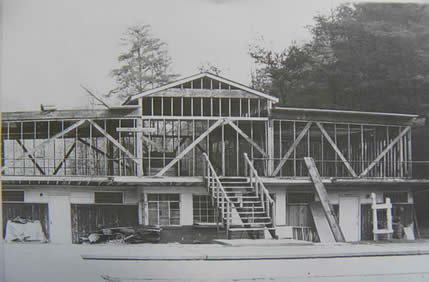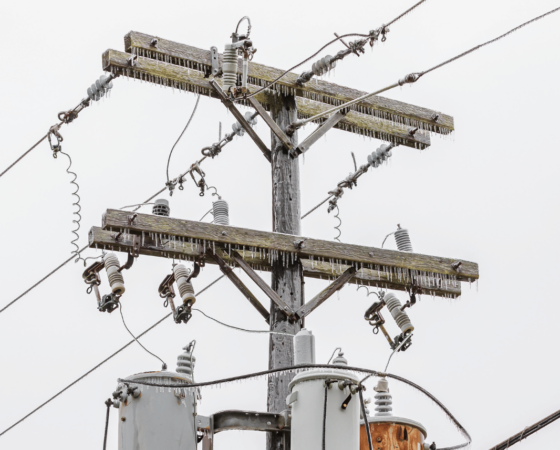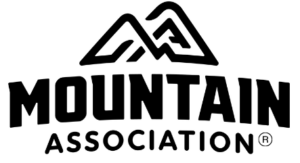by Herb Smith
As featured in the special Appalachia edition of the Solutions Journal. The author is a film-maker and Kentucky native. More information about his work can be found through Appalshop.
My family has been on the roller coaster of central Appalachia’s economy for the past 150 years. We have gone from subsistence agriculture to a coal-based boom; from the depths of the Great Depression to a World War II resurgence, followed by the long downward slope of the past 60 years. I tell my family’s story because it is similar to the stories of thousands of other coalfield families. I believe we must change the ownership of our region’s coal before the coal is all gone, so I propose a community foundation with the ability to buy Letcher County’s unmined coal at the values set for property tax. The royalties from coal, oil, and gas would fund the county’s shift away from coal.
Let’s start with my grandfather’s grandfather, John Ison. He and his family lived along a stream called Kingdom Come Creek. They raised everything they ate except the wild game they hunted and the chestnuts and other things they gathered from the woods. By all accounts, they didn’t have much money, but they had plenty to eat. My grandfather, Marion Ison, liked to tell stories about “the old-timers.” Marion said they used coal only in their blacksmith shops, preferring to heat with wood. Marion knew what it was like to hoe corn all day, but he liked the way the old-timers were self-sufficient. The work was hard, but they lived on land they owned.
My family’s relationship to that land changed 25 years before the railroad came. The deed states that on July 7, 1887, John Ison sold the mineral rights to his 1,000-acre farm on Kingdom Come Creek for $500. That’s 50¢ per acre for land that contains some of the most valuable seams of coal in America. If the land averaged 5,000 tons of coal per acre, a conservative estimate, then he received a hundredth of a cent per ton. Of course, $500 was more valuable in 1887 than it is today, but one hundredth of a penny per ton is a joke. But the joke is not funny, and the deed doesn’t stop at coal. It includes “all the coal, salt water, oil, minerals, and gas lying in, under and upon our farm.”
Why did my grandfather’s grandfather do that? What was he thinking? At the bottom of the deed there was an “X” and the words “his mark.” Does that mean John Ison couldn’t sign his name? In his 1963 book, Night Comes to the Cumberlands, Harry Caudill describes a scene where such deeds were signed: “Unable to read the instrument or able to read it only with much uncertainty, the sellers relied upon the agent for an explanation of its contents—contents which were to prove deadly to the welfare of generations of the mountaineers’ descendants.”
I’m struck by the words “deadly to the welfare of generations.” While we know that there are a large number of people here who are barely surviving, are those old deeds the reason for the persistent poverty? Caudill’s words can be interpreted to mean that, by selling the wealth of the region for a pittance, our ancestors put us on the road to economic hardship. It is obvious today that the deeds were major mistakes, but I think the story isn’t that simple.
In November 1910, the Consolidation Coal Company, one of the largest coal companies in the United States, acquired 100,000 acres of coal in Letcher County. Company officials studied maps of the Appalachian coalfields and unanimously agreed that it was the most valuable area of undeveloped coal in America. They built a complete town with one goal: to mine the highly prized seam of coal known as Number 3 Elkhorn. They named the town Jenkins, after George Jenkins, a Baltimore banker and member of the company’s board of directors.
Neither John Ison nor his son Jasper worked in the coal mines. My grandfather, Marion, was in grade school in 1912 when the railroad was being constructed. When the railroad crew came by his school, the teacher stopped the lesson and allowed the students to go outside because none of them had ever seen black people before.
Jenkins was the largest of more than 30 company towns built in Letcher County. In a company town, the company owned and controlled everything. It even had its own currency, called scrip, which could be spent only at the company store. In essence, company towns were the antithesis of the America envisioned by Jefferson. Democratic discussion was discouraged, if not prohibited, and the company officials didn’t tolerate dissent. The miners were supposed to trust and obey. Company towns were designed and operated as though they were authoritarian camps, with distant entities making all the decisions.
When Marion married, his mother and father gave him some of their land on Kingdom Come Creek. Marion and his bride, Sallie, built a house on the land, and Marion went to work in the mines. My mother, Marion’s second child, was born in October 1929, 15 days before the stock market crashed. Marion and Sallie raised their five children during hard times. They had no running water, no electricity, and no telephone. Nevertheless, the fact that they owned their house enabled them to weather the Depression in better shape than the miners who lived in houses owned by the coal companies.
In the late 1930s, the economy of the coalfields began to improve as America’s factories geared up for the war effort. During the fall and winter months, Marion would walk to Benham—one of the large company towns about 20 miles from his house—work in the coal mines during the week, and then walk home for the weekends. In the spring and summer, he would stay home, plowing the land and growing food.
The economy of the coalfields boomed during World War II, but troubled times shortly returned. The “continuous miner,” an electric-powered machine that ripped the coal from the seam, combined with a system of beltways that carried the coal out of the mines, transformed underground coal mining. Thousands of underground mining jobs were eliminated. At the same time, large earth-moving machines were used to mine coal seams close to the surface. Surface mines destroyed the mountains and the streams but required even less labor than the newly mechanized underground mines. The number of coal miners in the United States dropped from 507,333 in 1948 to 134,467 in 1968. More than 370,000 coal mining jobs disappeared in 20 years. What happened to all of those families? Most of my dad’s family and all of my mom’s brothers and sisters joined the stream of economic refugees leaving the county. A few months before I was born, my dad was hired by a coal mining subsidiary of Bethlehem Steel Corporation, one of the nation’s largest steel producers. The pay was decent, and my dad liked coal mining, so we stayed.
My dad’s job turned out to be relatively stable, but most coal mining jobs were not. Census data shows that our county lost more than 40 percent of its population between 1950 (39,522) and 1970 (23,165). My high school class was an example. Whitesburg High enrolled 300 freshmen for the 1965–66 school year. Over the next four years, several of my classmates dropped out; others moved away with their families. So by graduation day in May 1970, there were 185 graduates. By the end of June, I’d estimate that 150 of those graduates had left the county, most with no hope of living in the coalfields again.
Are mineral deeds, company towns, and mechanization the reasons for the widespread poverty that has existed in the Appalachian coalfields for 60 years? The massive unemployment could have been managed much better than it was. There were some efforts to feed the hungry, but Letcher County was a very stark place. Dilapidated houses, bad roads, poor schools, and inadequate health care presented a set of difficult problems. However, the poverty of Letcher County, and much of Appalachia, isn’t the result of isolation or so-called poverty pockets. Poverty in mining towns is not due to a lack of modernization, it has resulted from the way that modernization occurred.
Certainly, the disenfranchisement that characterized mining towns throughout their history helps explain the economic problems of the region. However, it doesn’t explain everything. That history leaves out the potential of mountain people to become players in shaping their economic destinies.
In 1986, a statewide citizens group, KFTC (initially called the Kentucky Fair Tax Coalition, then Kentuckians for the Commonwealth) challenged the property taxes of the mineral-holding—or, more accurately, the coal-leasing—companies. In Letcher County, we faced Kentucky River Coal Corporation. They had “fee simple” deeds to more than 20,000 acres, meaning they owned the surface and minerals. In addition, they claimed 40,000–50,000 acres of mineral rights where others owned the surface. KFTC estimated that they were earning more than $10 million per year by leasing their Letcher County coal rights. Kentucky River Coal paid a laughable $22 in property tax on that coal.
This situation had two major causes. The first and most important was that the Kentucky General Assembly had set the tax rate on unmined coal at one-tenth of 1¢ per $100 of assessed value. The residents of Letcher County paid about $1 per $100, a thousand times the tax rate the coal companies were paying. The second problem was the assessment. The assessment was, and to this day remains, ridiculously low. While it’s difficult to place a value on unmined coal, it’s not impossible. Although KFTC, with the help of the Southern Poverty Law Center, won a court case in 1988 that successfully did away with the ridiculously low tax rate on unmined coal, the assessments are still being calculated in the state’s capital by the Kentucky Department of Revenue. It would be safe to say that the value of Letcher County’s coal is $100 million more than the department’s assessment.
Rather than endless arguments about those old deeds and fair assessments, what we need is a different ownership structure for the region’s mineral wealth. We need a countywide community foundation. The foundation could receive state and federal money and could also solicit private funds. All of the income from the corpus would be used for community needs, like college scholarships for high school graduates. If the Kentucky General Assembly were to force Kentucky River Coal and others who own Letcher County coal to sell their mineral rights to the community foundation at the assessed value, then we would either get higher assessments—and therefore more revenue for the county—or the rights to our coal.
Why buy the mineral rights at a time when climate scientists are arguing that we should be burning less coal? The shift from fossil fuel dependency will occur because the resource is limited. We don’t know when the shift will happen, nor do we know how quick it will be. The idea is to use the income from the remaining years of fossil fuel to finance the inevitable transition in the county’s economy. If the community foundation had a corpus of $100 million it could count on an annual income of $5 million. What if each graduating high school student was to receive a $10,000 scholarship? That would cost about $2.5 million per year. This could go a substantial way toward improving the traditionally low educational achievement levels of our communities. We have a huge amount of work to do if we are going to improve our economy. By buying the mineral rights and using the income for the people who live here, we would effectively be saying, “We have the ability to undo some of those old mistakes and build a better economy.”
My brother, his children, and his grandchildren live on some of the land that John Ison owned along the waters of Kingdom Come Creek. The grandchildren will almost certainly see the day when the last train of coal leaves Letcher County. Maybe Letcher county schools will stop the lessons and allow the students to see the last coal train leave. The process of creative destruction will continue. The strange economic bubble that coal mining created will have burst, and future generations will have to leave the county or create new jobs. To create jobs, they will need to shift from being recipients of jobs generated by others to being creative participants in their own economic future. Our communities were here before large-scale coal mining arrived, and some of us plan to remain long after it has departed.
